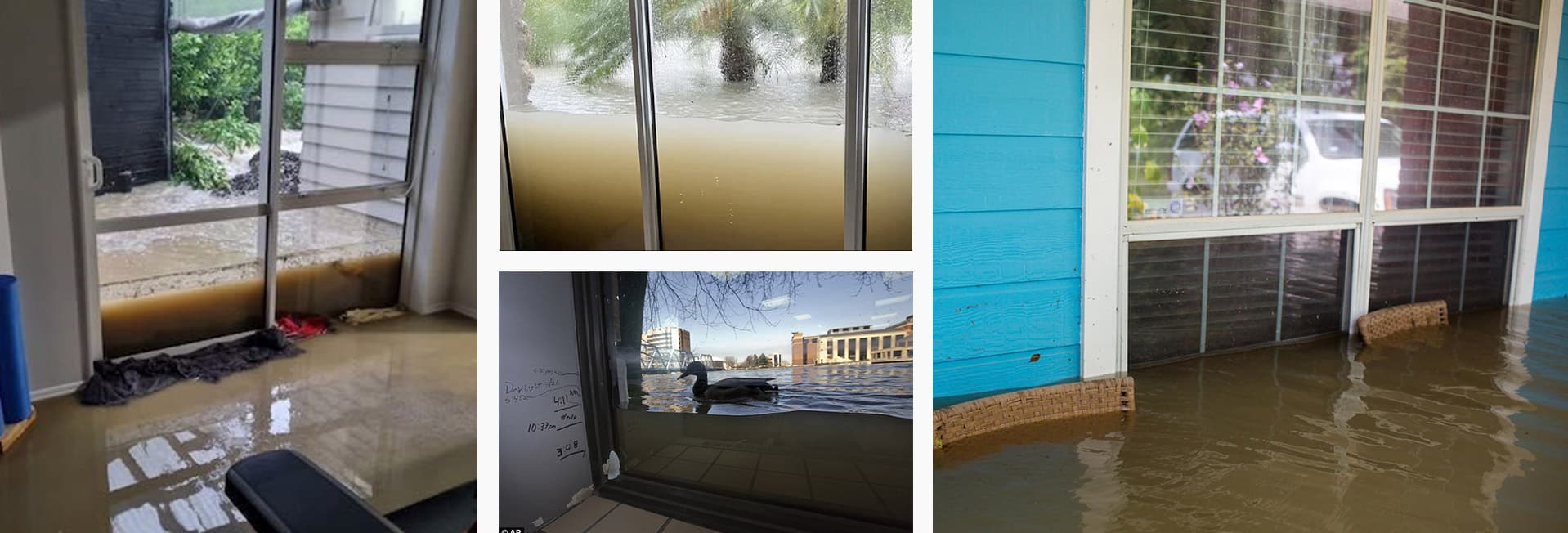
Flood Damaged Windows and Doors
Flood damaged windows and doors may not perform as originally designed or intended. There are two situations, windows and doors manufactured but not yet installed and those that have been installed in either a partially completed build or an inhabited building. Either way, windows or doors subjected to flood waters are unlikely to meet their warranty conditions and should be replaced. Regardless windows and doors must be thoroughly cleaned and decontaminated before use.
Glazing
The industry goes to great lengths to ensure that IGU’s (insulating glass units or double glazing) do not sit in water or remain wet for any length of time to avoid damage to the edge seal and a potential premature failure of the unit. Any IGU’s that have sat in flood waters will no longer carry a warranty and will have to be replaced to ensure an adequate life.
Windows
Window systems have in-built drainage channels which will easily be clogged with silt and debris if the window were subjected to flood water. These channels must be thoroughly cleaned and decontaminated before the window is used. This will involve deglazing the window to access the glazing platform, drainage channels, and drainage blocks/holes to ensure all spaces are adequately cleaned. Do not use chemical cleaners. Windows should only be cleaned using warm soapy water with a disinfectant included for contaminants.
Timber reveals should also be assessed for damage. Timber is porous and may absorb contaminants from flood waters and it is suggested these are replaced if in doubt.
Doors
Door systems whether, hinged, bifolding, or sliding all have the same in-built systems as windows, but given they are generally full height elements starting at floor level, they are more likely to have been compromised by flood waters. Not only must the door sills and tracks must be thoroughly cleaned to ensure ongoing operation of the unit, but the panels must be treated in a similar fashion. The extrusions used to build these panels are often hollow and will contain silt and debris if subjected to flood waters. This applies to aluminium, thermally broken aluminium, and uPVC systems. Timber doors will have similar issues with the track systems but will need to be assessed in a similar fashion to timber reveals as mentioned above.
Additionally, hardware, rollers, flush bolts, hinges, and locks along mohair seals, gaskets, and other seals should be checked and replaced where necessary.



